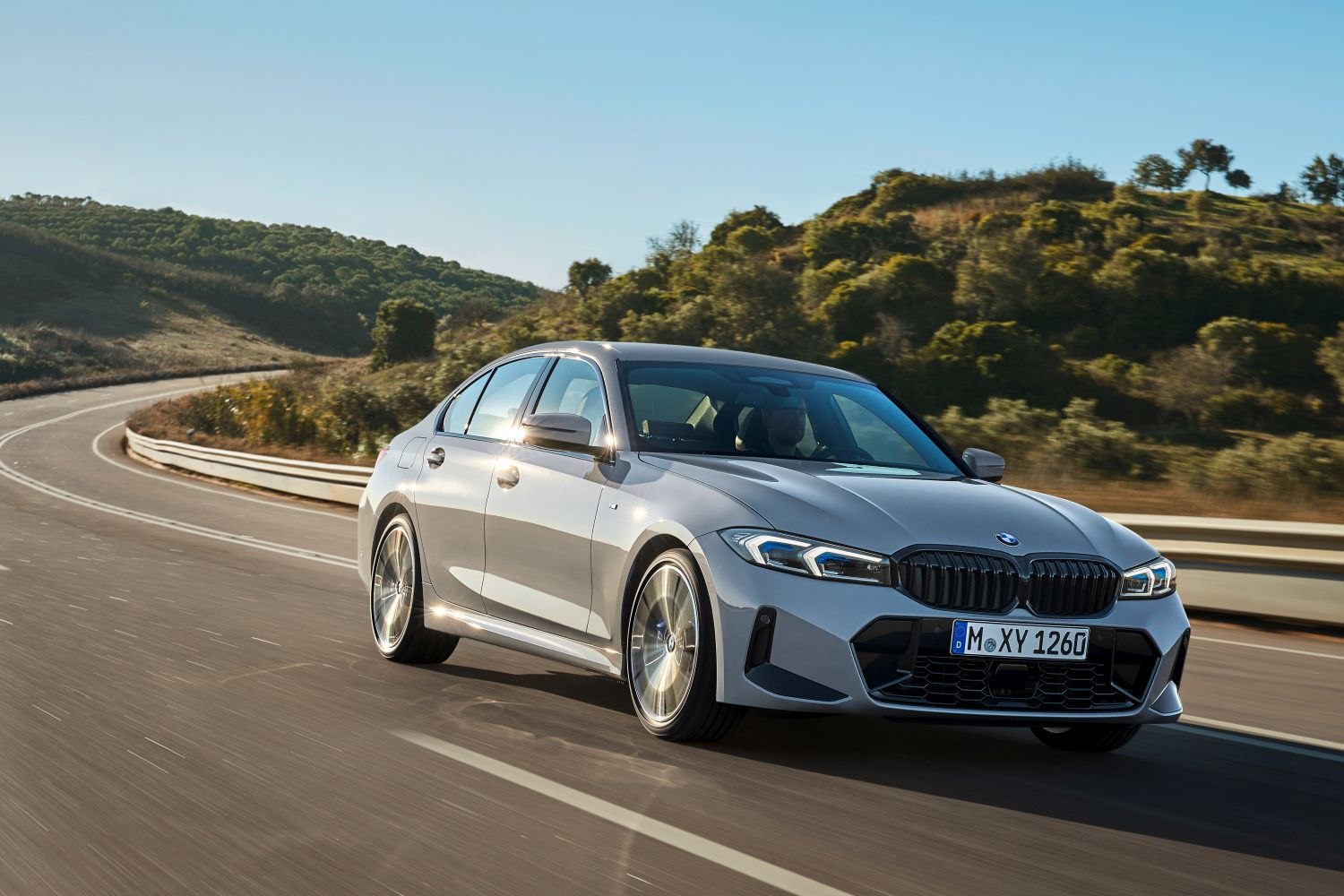A car’s pedal layout may seem like a minor detail until you spend hours in stop-and-go traffic or twisty backroads. Well-designed pedals offer a natural resting position, even pressure, and seamless transitions between gas, brake, and clutch (when applicable).
In contrast, clumsy pedal setups can cause fatigue, missed inputs, or even dangerous slips. Here are five cars praised for their excellent pedal ergonomics and five that fall short with awkward layouts.
When it comes to car ergonomics, the conversation usually centers on seats, steering wheels, or touchscreen placement. But there’s one critical area that rarely gets the spotlight: the pedal layout. You interact with the pedals every time you drive, and yet most buyers don’t think twice about how well—or poorly—they’re positioned. That’s a mistake.
Good pedal ergonomics can make or break your driving experience. Whether you’re crawling through stop-and-go traffic, carving up a mountain road, or just pulling into a parking spot, your foot’s relationship with the gas, brake, and clutch (if applicable) matters more than you think.
Cars With the Most Ergonomic Pedals
The best pedal layouts feel intuitive—your feet fall into place naturally, with no awkward angling or guessing. The worst? They’ll have you contorting your ankles, misjudging inputs, or wondering if the car was designed for a different species entirely.
On the flip side, we’re also calling out five models that fumble the fundamentals, where the layout feels like an afterthought. Whether you’re a daily commuter or a driving enthusiast, knowing which cars to lean toward—and which to think twice about—can make all the difference.
1. Mazda MX-5 Miata (ND Generation)
The MX-5 Miata has long been a favorite among driving purists, and its pedal layout is part of the magic. The gas and brake pedals are perfectly spaced for heel-and-toe shifting, especially in manual models.
The clutch has a light, progressive feel, and all three pedals are positioned to match the driver’s natural posture. It’s a textbook example of how driver-focused design should work.
In several key respects, the Mazda MX-5 remains a standout in today’s automotive world. It’s a compact, lightweight sports car that still offers a manual transmission—a rarity in an era dominated by automatics and CVTs.
It’s also priced within reach for many enthusiasts and carries a solid reputation for reliability. Provided you can live without a spacious back seat or generous cargo capacity, the MX-5 is even viable as a daily driver. Aside from a couple of rare exceptions, no other car on the current market offers that same unique mix of attributes.
Because of this distinct niche, Mazda doesn’t need to reinvent the Miata every year or load it up with cutting-edge tech to keep it relevant. The car’s core concept already hits a sweet spot, though there are still a few things a potential buyer should think about.
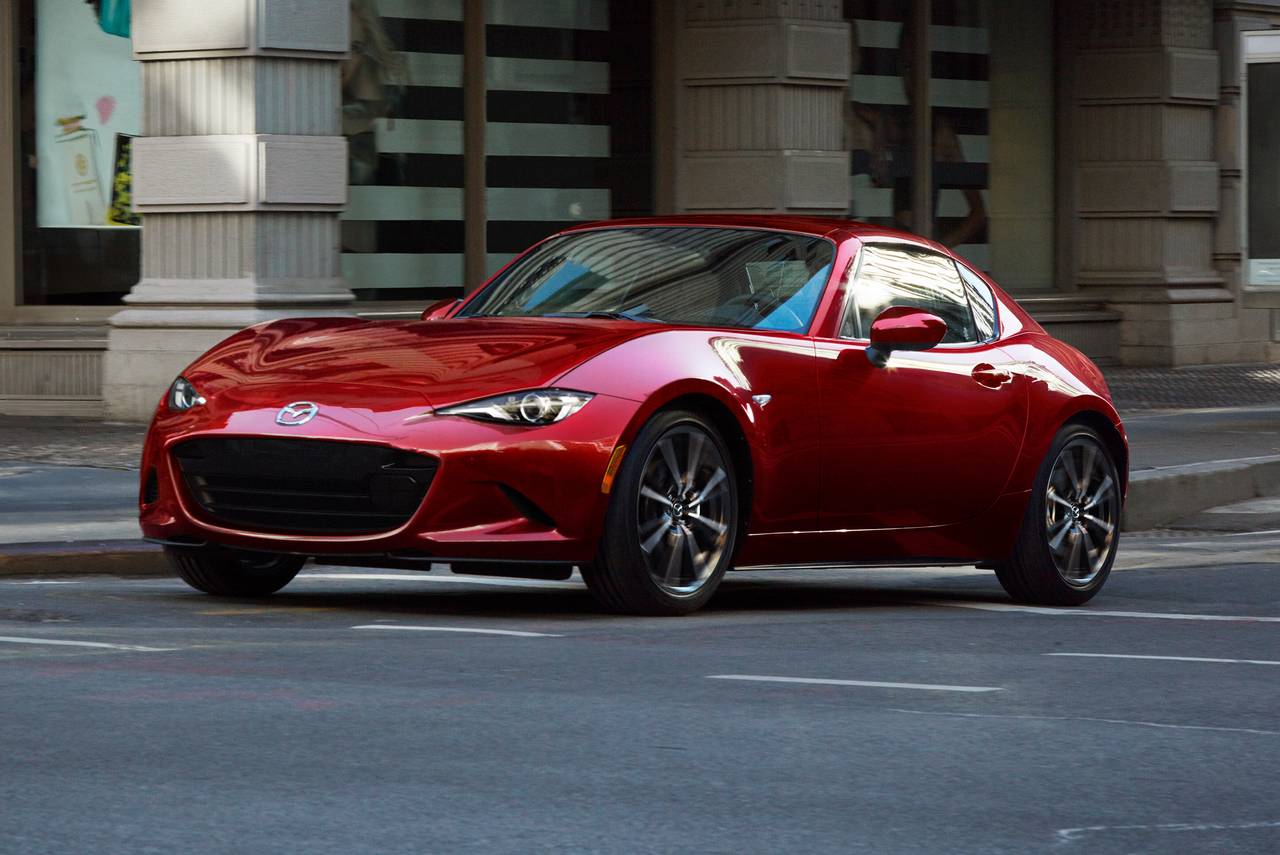
Questions like whether you’re better off going new or used, or choosing between the classic soft-top roadster and the retractable fastback (RF), don’t have one right answer. That’s why we’ve laid out the most important factors to consider before walking into a dealership.
The days of buying a brand-new Miata for under $30,000 are gone. The entry-level Sport trim starts at $29,530, and once you factor in the mandatory destination fee—$1,185 in most states or $1,230 in Alaska—you’re just over the $30K mark. Still, the base Miata roadster delivers strong value.
You get standard features like Apple CarPlay and Android Auto, along with safety tech including blind spot monitoring. Every trim shares the same 2.0-liter engine producing 181 horsepower.
Moving up to the Club trim brings in performance and tech upgrades, starting at $33,030 before fees. This version adds a Bose premium sound system and a sport-tuned suspension setup.
For an extra $1,800, the Grand Touring trim offers more upscale touches like heated leather-trimmed seats and integrated navigation. The highest-priced version of the 2025 soft-top lineup is the 35th Anniversary Edition, which we’ll dive into further below.
If you want more practicality, the Miata RF—with its power-retractable hardtop—adds some year-round usability. That comes at a noticeable price bump: the RF’s most affordable trim is the Grand Touring, which starts at $37,550 before destination fees. The range-topping RF Club trim pushes the cost to at least $40,850 plus fees, making it a premium proposition.
Also Read: 5 Pickups With Best Front-Driving Visibility and 5 With Big Blind Zones
2. Porsche 911 (992 Generation)
Porsche’s attention to detail shows in the 911’s perfectly placed pedals. Whether driving an automatic or manual variant, the footwell is roomy, and the throttle and brake are aligned for performance driving.
Manual models feature a well-weighted clutch and pedals spaced precisely for high-performance maneuvers. Even tall drivers find the pedal ergonomics ideal for long-distance comfort or track use.
Porsche states that the new GTS T-Hybrid delivers a total of 534bhp and 450lb ft of torque. For context, the pre-facelift GTS produced 473bhp from its 3.0-litre twin-turbocharged engine, so even with one turbocharger now removed, this represents a significant performance bump.
Historically, the GTS has often been considered a sweet spot in the 911 lineup—balancing performance, livability, and price—so integrating a hybrid system into such a well-regarded variant could be seen as a gamble for Porsche. To see whether that gamble has paid off, head over to the Driving section.
The new GTS T-Hybrid comes in at a starting price of £135,834. However, if you’re willing to accept a power deficit of around 150bhp and pocket nearly £40,000 in savings, the base Carrera could be the more appealing option.
It’s offered in both coupe and cabriolet body styles, and for those looking to step up, the Carrera T and Carrera S are available as well. Here’s a quick breakdown: the Carrera T retains the base engine but adds lightweight and performance-oriented features, while the Carrera S boosts output by 90bhp thanks to more aggressive tuning of its twin-turbo setup.
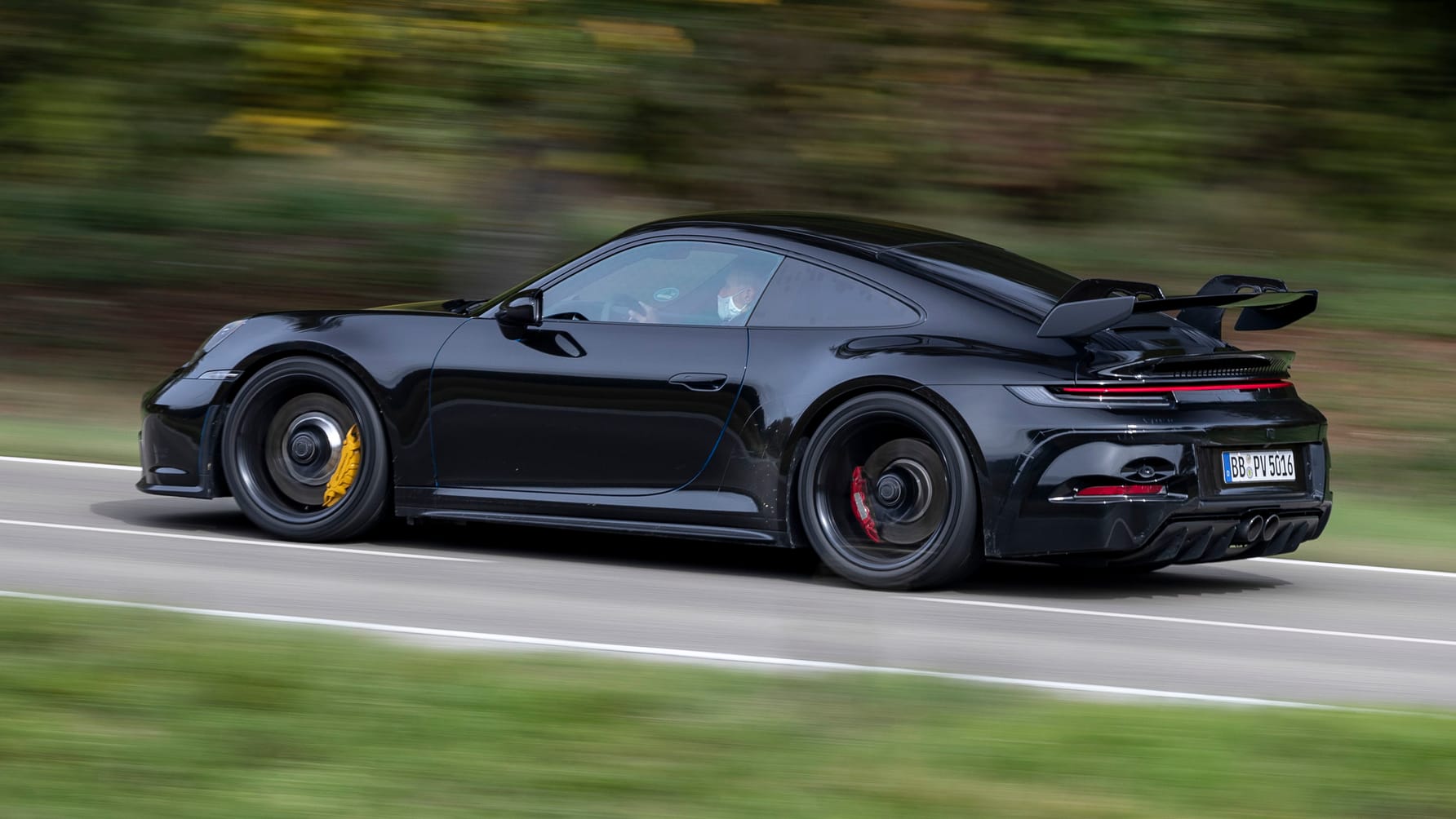
Currently, the GTS remains the only variant available with four-wheel drive or the Targa body style, but in true Porsche fashion, expect these features to trickle down across the range throughout 2025. The same rollout strategy is expected for the Turbo models—likely to adopt similar hybridized turbo tech as the GTS—and the recently teased GT3.
As for pricing, the base Carrera narrowly slips in below the £100,000 threshold in the UK. It still uses a 3.0-litre twin-turbo flat-six engine paired with a PDK dual-clutch transmission. At the moment, there’s no manual gearbox option—unless you go for the Carrera T, where it comes as standard—and there’s no hybrid assistance either.
However, the standard Carrera does benefit from some trickle-down upgrades: it now features the intercooler from the outgoing 911 Turbo, along with the larger turbochargers from the 992.1 GTS, which no longer requires them due to its new single electric turbo setup.
Power in the base Carrera now stands at 389bhp, with torque rated at 332lb ft. While these increases are relatively modest, Porsche has managed to improve overall efficiency. The car accelerates from 0 to 62mph in 4.1 seconds—or 3.9 seconds if equipped with the Sport Chrono package. Curb weight has inched up slightly, from 1,505kg to 1,520kg.
3. Honda Accord (10th Generation)
The 2018–2022 Honda Accord features an ergonomic layout rarely seen in mainstream sedans. The pedal angles and distances allow for a natural foot motion, reducing ankle strain over long drives.
Braking pressure feels predictable, and the wide floor space gives drivers of all sizes room to operate comfortably. It’s an underappreciated aspect of what makes the Accord such a great daily driver.
Even in today’s SUV-obsessed market, there remains a strong demand for a practical, efficient mid-size family sedan—and the 2024 Honda Accord stands as the best all-around choice. While base models come equipped with a turbocharged 1.5-liter four-cylinder engine, most trims now utilize a hybrid powertrain that pairs a 2.0-liter four-cylinder with two electric motors.
Regardless of which setup you choose, front-wheel drive remains the only configuration. The Accord was fully redesigned last year, and the latest iteration features some of the most refined and attractive styling the nameplate has worn in generations.
Inside, it continues to impress with two spacious rows of seats, a large, well-shaped trunk, and a full suite of modern infotainment and safety tech. Yet, what really elevates the Accord above its rivals is its composed and enjoyable road manners.
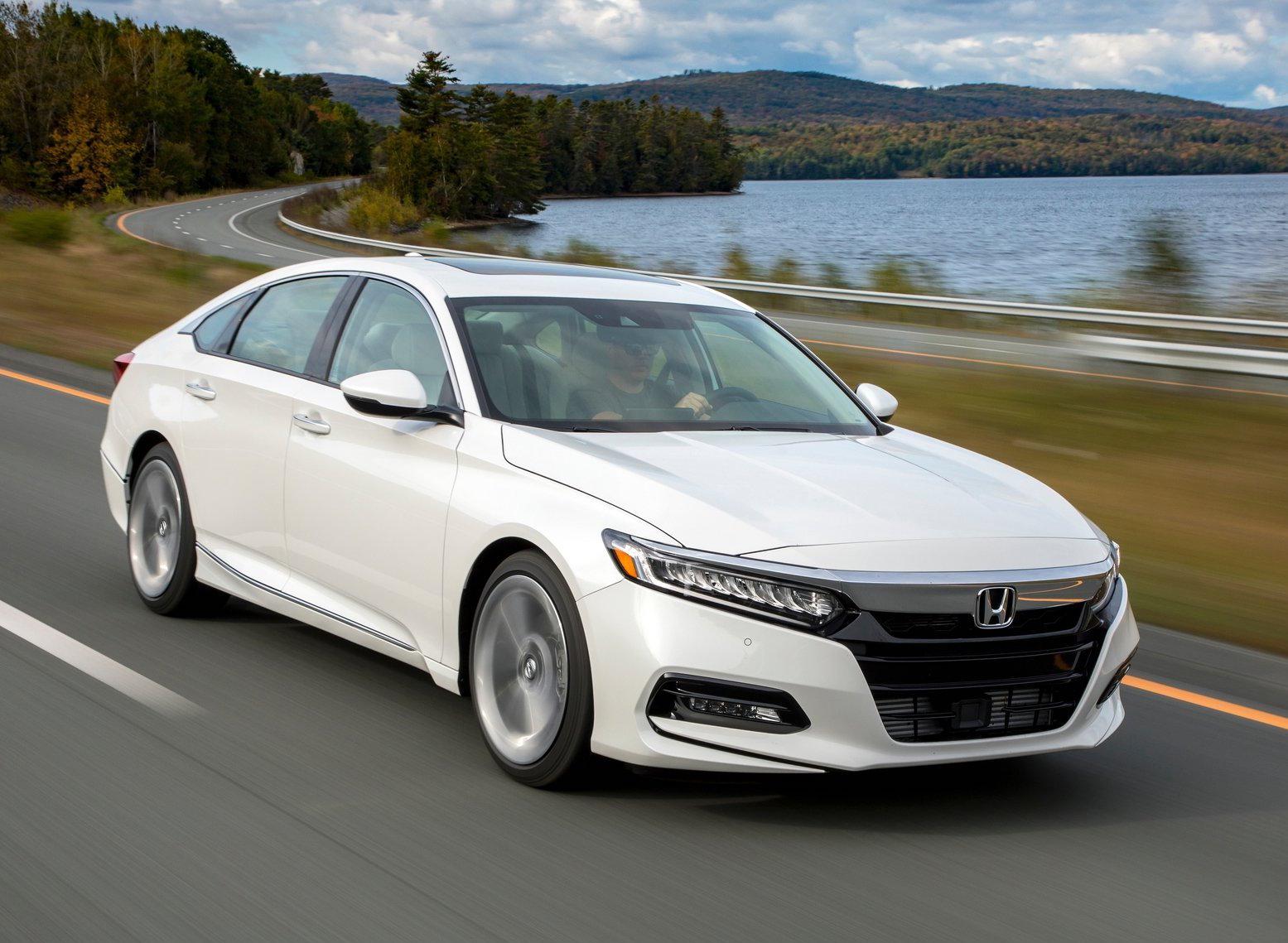
From the first mile, its crisp steering, balanced suspension, and confident handling make it feel more premium than its price suggests. This all-around capability is what secures its repeated placement on Car and Driver’s 10Best Cars and Editors’ Choice lists for 2024.
The EX-L Hybrid is the sweet spot in the range—it includes the more powerful 204-hp hybrid system, a larger 12.3-inch infotainment touchscreen, leather upholstery, front and rear parking sensors, a sunroof, dual-zone climate control, and wireless Apple CarPlay and Android Auto. Honda also provides a new vehicle comparison tool to help buyers evaluate the Accord against other options on the market.
Performance-wise, the LX and EX trims use the 192-hp turbocharged 1.5-liter four-cylinder paired with a CVT, and as has long been the case, there’s no all-wheel-drive option. The hybrid system, offered in the Sport, EX-L, Sport-L, and Touring trims, delivers a combined 204 horsepower.
In testing, the Accord Hybrid achieved a 0–60 mph time of 6.5 seconds, while the non-hybrid version reached the same mark in 7.3 seconds.
Honda made minor tweaks to the suspension and steering for 2024, but the overall ride and handling feel consistent with the previous generation—which is no bad thing. The Accord continues to provide a ride that’s both comfortable and composed, with sharp steering and excellent body control.
Also Read: Top 10 EV Features That Come in Useful in Daily Commute
4. BMW 3 Series (G20)
The G20-generation BMW 3 Series delivers excellent pedal placement consistent with its sports-sedan mission. The throttle and brake are positioned to allow smooth modulation, and in manual versions, the clutch is light but communicative.
BMW has consistently refined this layout across generations, and it’s especially noticeable during spirited driving.
After nearly fifty years and over 20 million units sold globally, the BMW 3 Series has long been a success story. What began as a modest two-door offering grew into a diverse family of vehicles that included sedans, coupes, convertibles, and station wagons.
In 2014, however, BMW made a key decision to divide the lineup, assigning the 3 Series nameplate to sedans and station wagons, while reserving the newly introduced 4 Series designation for coupes and convertibles, whether two-door or four-door.
So, when the seventh-generation 3 Series debuted in 2018, it was offered exclusively as a sedan and a station wagon. By 2022, BMW gave the G20-generation 3 Series a refresh, leading many to assume that an all-new generation would arrive in 2026.
But in a move that defied expectations, BMW released a second update to the G20 model in 2024. Rather than calling it a facelift, the company used its signature term, Life Cycle Impulse—LCI for short.
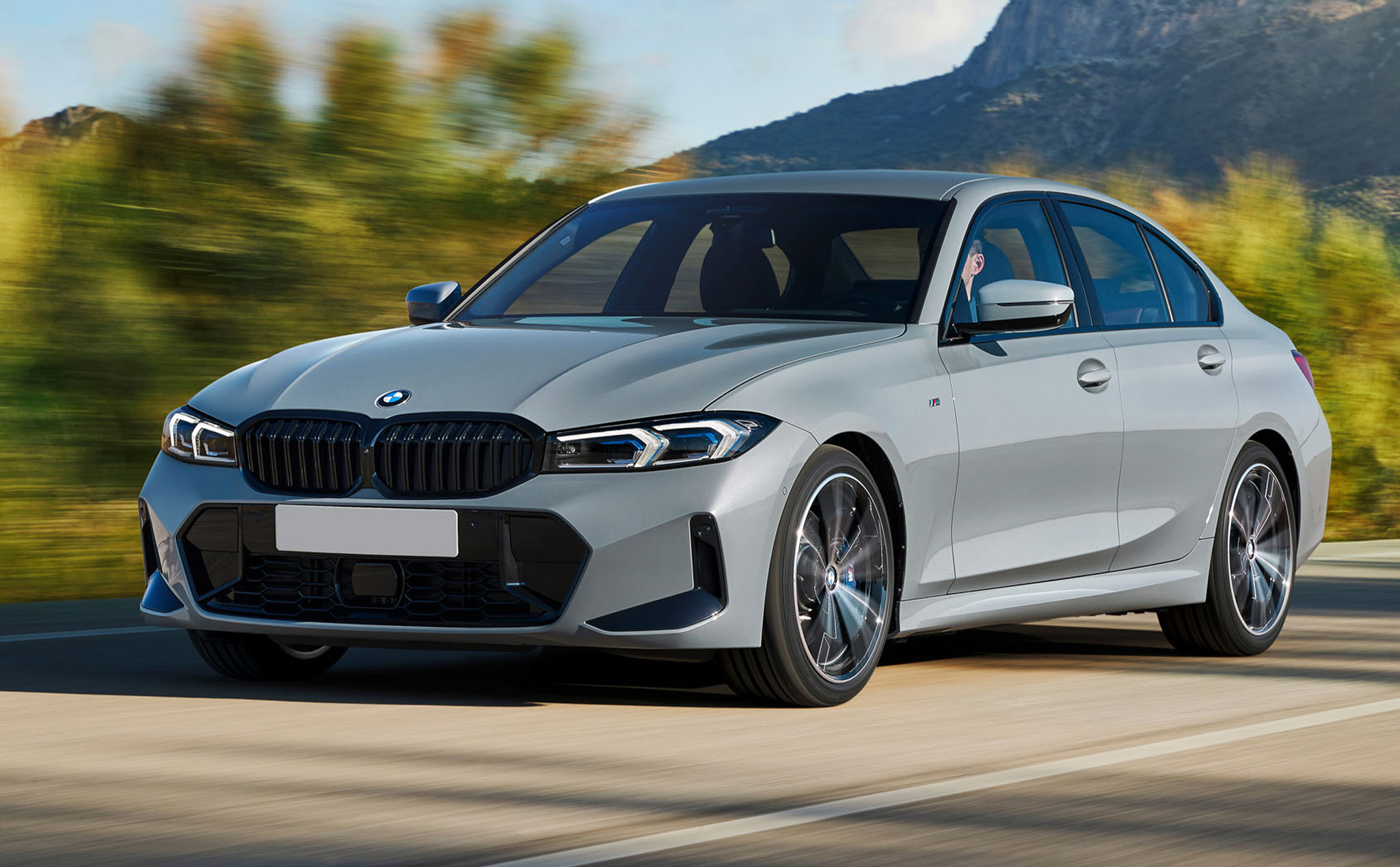
Among the most noticeable exterior changes was the redesign of the headlights. Depending on the trim level, buyers could now get LED, adaptive LED, or Matrix-LED lighting units.
BMW also retired its signature “angel eyes” lighting theme—those halo-style rings encircling the main beams—and replaced them with distinctive, comma-shaped elements for the daytime running lights.
Between these updated headlights sits a revised kidney grille, now wider, more angular, and with a flatter horizontal layout. As for the lower front bumper, buyers can choose from three styling options: the standard setup, the M-Pack, and the M-Pack Pro.
All three feature a wide center intake flanked by vertical air curtain vents, which help improve aerodynamic efficiency. However, each has subtle differences.
The base version includes more compact side vents, while the M-Pack and M-Pack Pro variants come with taller, more aggressive-looking air channels. Additionally, the M-Pack Pro swaps the grille’s silver trim for glossy black surrounds, giving it a sportier, more assertive look.
5. Subaru BRZ / Toyota GR86 (2nd Generation)
Co-developed by Toyota and Subaru, the BRZ/GR86 is known for its driver-oriented cabin and that includes the pedal setup. Perfect for heel-and-toe action, the placement of the brake and accelerator pedals encourages performance driving.
Manual transmissions feel intuitive, and the clutch engagement is consistent and easy to modulate, making the car enjoyable on twisty roads or in traffic.
The 2025 Subaru BRZ continues to offer a manual transmission, and those who prefer shifting gears themselves will now enjoy the benefits of a new Sport driving mode that enhances throttle response.
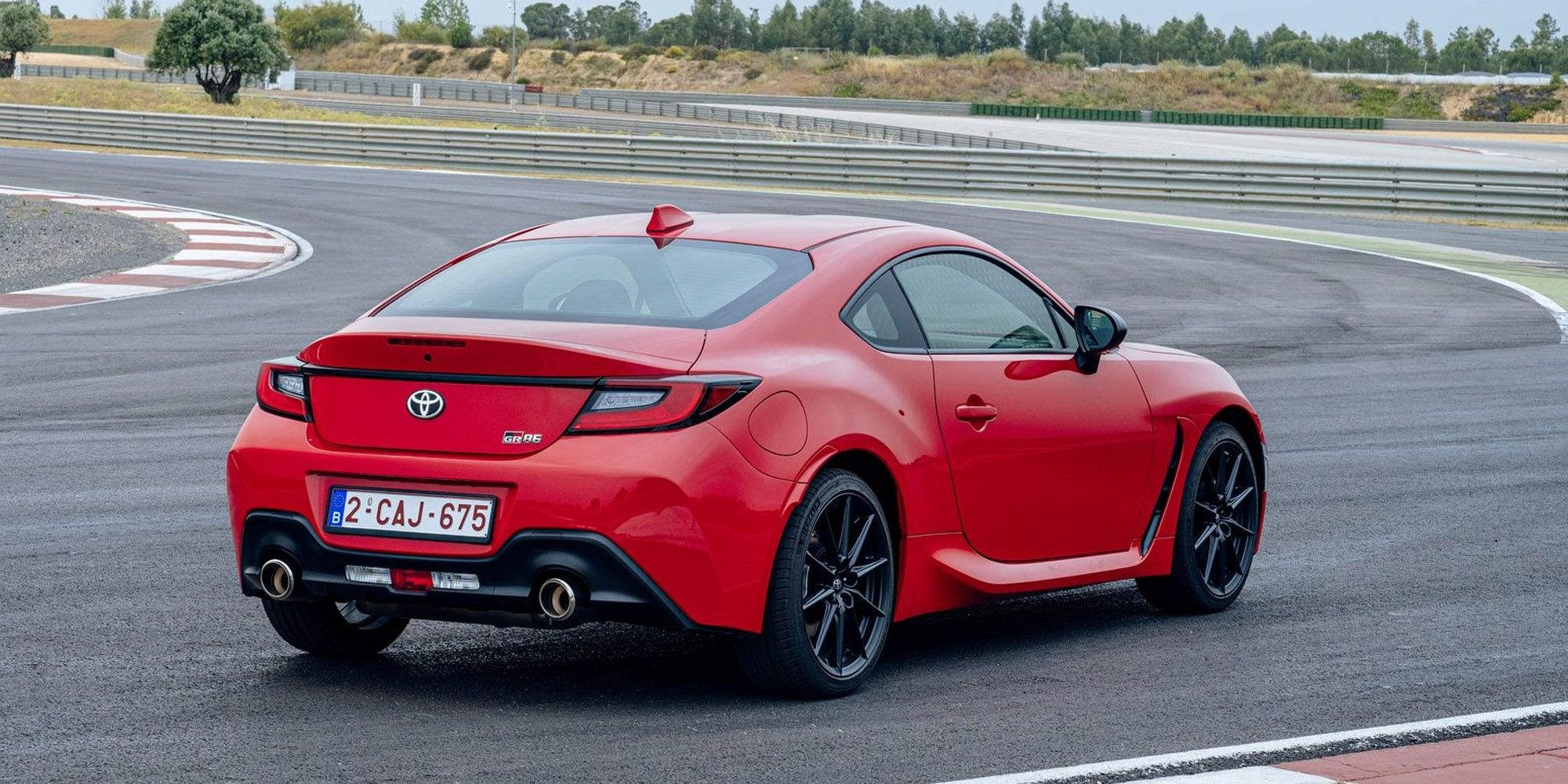
Performance-focused drivers can look to the top-tier tS trim, which incorporates upgrades to the suspension, brakes, and chassis. This near-STI variant stands as the fastest BRZ yet, delivering exceptional ride quality and balance. No matter the version, the BRZ maintains sharp handling, confident high-speed stability, and commendable safety ratings.
While the BRZ is a strong contender in the sports car category, there are a few caveats to consider. Its sound insulation could be improved, which may be a drawback for those planning to use it as a daily driver.
Compared to its sibling, the GR86—Toyota’s counterpart built on the same platform—the BRZ is slightly more restrained in its willingness to break into controlled oversteer. Then there’s the Ford Mustang, which brings more horsepower and a roomier interior to the table. Though these points might not deter most buyers, they are valid considerations when weighing how well the BRZ fits into everyday life.
Cars With Clumsy Pedal Layouts
Not every driving flaw jumps out at first glance—but clumsy pedal layouts absolutely do, and once you notice them, they’re hard to ignore. Whether it’s a brake that’s awkwardly offset, a gas pedal placed too close to the transmission tunnel, or a dead pedal that somehow misses the point, poor pedal ergonomics can ruin the driving experience—even in otherwise well-engineered cars.
For enthusiasts, awkward pedal positioning can make heel-and-toe downshifting a chore; for commuters, it can lead to discomfort or even unsafe missteps over time.
In this article, we highlight a selection of cars that, despite their performance, luxury, or practicality, miss the mark when it comes to one of the most basic aspects of driving: pedal layout. These aren’t necessarily bad cars—but their footwork needs serious work.
1. Jeep Wrangler (JL Generation)
The 2018+ Wrangler suffers from an oddly offset pedal layout due to its boxy, body-on-frame construction. Drivers often complain about the brake pedal sitting too far to the left, leading to an awkward foot angle.
The clutch, on manual models, is high and stiff, making urban driving tiring. The situation is worse for taller drivers who feel cramped by the limited legroom.
Few vehicles embody the spirit of freedom quite like the 2022 Jeep Wrangler, especially when it’s cruising down an empty trail with the top rolled back and the unknown just around the corner. This legendary off-roader blends its unmistakable retro design—an homage to the original World War II-era Jeep—with a surprising array of modern amenities.
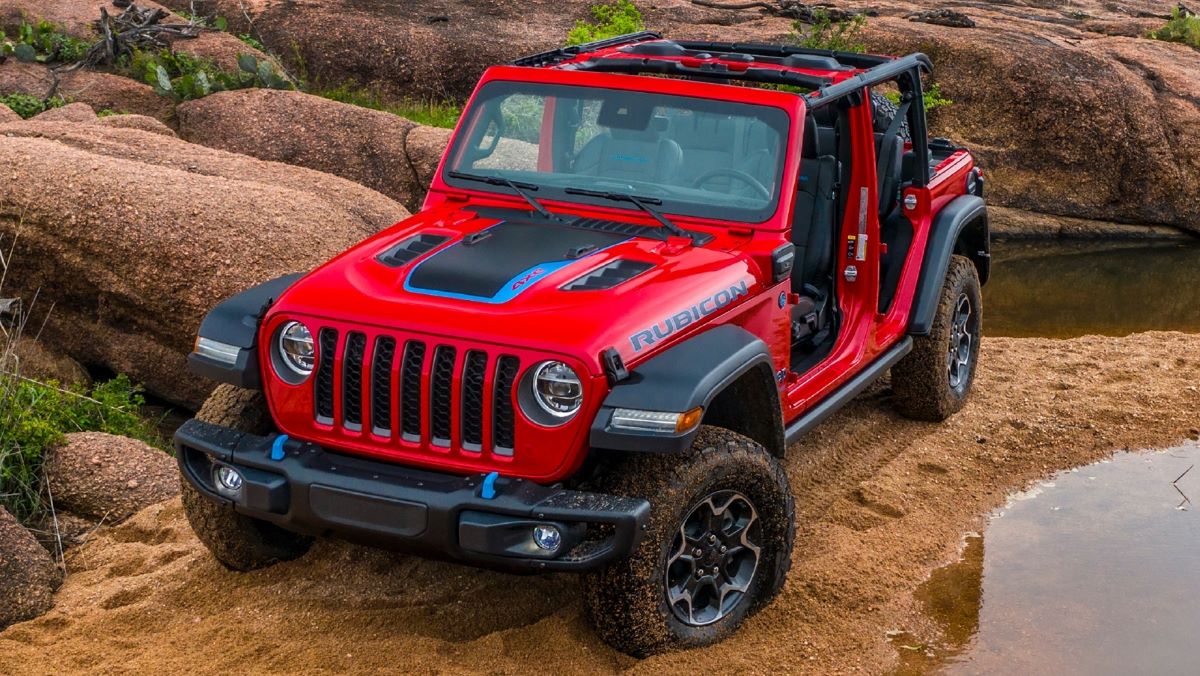
Features such as a touchscreen infotainment system, cruise control, and an eight-speaker audio setup are standard fare, while higher trims push into luxury territory with leather-trimmed seats, ambient interior lighting, in-dash navigation, built-in Wi-Fi, and even a power-operated soft top.
Buyers can choose between the classic two-door configuration or opt for the more spacious four-door Unlimited variant, which offers more room for both passengers and gear.
Under the hood, the Wrangler lineup is as varied as its off-road audience demands. Powertrain options range from the standard offerings to a robust plug-in hybrid (covered in a separate review), all the way up to a fire-breathing 6.4-liter V-8.
Regardless of which engine you go for, every Wrangler comes standard with four-wheel drive. On top of that, Jeep offers a wide range of features designed to boost off-road performance, allowing customers to tailor their Wrangler to their own vision of adventure.
Despite all of the Wrangler’s rugged charm and improved day-to-day usability, Jeep’s most iconic vehicle still falls short of fully replacing a unibody crossover.
Its body-on-frame design, solid axles, and recirculating ball steering contribute to a rough, less refined on-road experience. These traits underscore the Wrangler’s commitment to off-road dominance—a dedication that earned it a win over the Ford Bronco in a direct comparison.
However, it also lost out to the Ford Bronco Sport in a budget off-road SUV comparison, highlighting the inherent trade-offs of its traditional platform. For 2025, all four of the Wrangler’s available powertrains carry over, including the Hemi V-8. Every Wrangler comes with four-wheel drive as standard.
The 4xe delivers roughly 20 miles of all-electric range, making it ideal for short commutes or quiet trail rides. With Level 2 charging, the battery can be fully recharged in around two hours. It’s also visually distinct, with blue trim accents and a charge port at the base of the driver-side A-pillar.
Jeep expanded the 4xe powertrain to more trims last year, including the Sport S, Willys, Sahara, High Altitude, and Rubicon, a move expected to continue into 2025.
The loudest and most powerful Wrangler is the Rubicon 392, equipped with a 6.4-liter V-8 that puts out 470 horsepower and 470 lb-ft of torque. This model rockets from 0–60 mph in just 4.2 seconds, based on our testing.
It features Fox 2.0 monotube shocks (without reservoirs), a one-inch lift, relocated rear suspension mounts, stiffer front springs, and softer rear springs. For a detailed look at how it stacks up against the Ford Bronco Raptor, be sure to check out our full comparison test.
2. Chevrolet Camaro (6th Generation)
Despite its muscle car appeal, the sixth-gen Camaro has an unusually tight footwell. The pedals are close together and offset toward the center, which forces your legs into an unnatural angle.
Visibility and ingress are already issues in the Camaro, but the awkward pedal geometry makes it worse especially on long drives or in stop-and-go traffic.
As it has in the past, the Camaro is once again preparing to exit the stage. Chevrolet has confirmed that the 2024 model year will mark the end of the line for the iconic muscle car.
To commemorate its final year, Chevy will offer a special Collector’s Edition package available on the RS, SS, and a limited run of ZL1 models. While specifics remain scarce, it appears this Collector’s Edition will be largely cosmetic, paying tribute to the original first-generation Camaro.
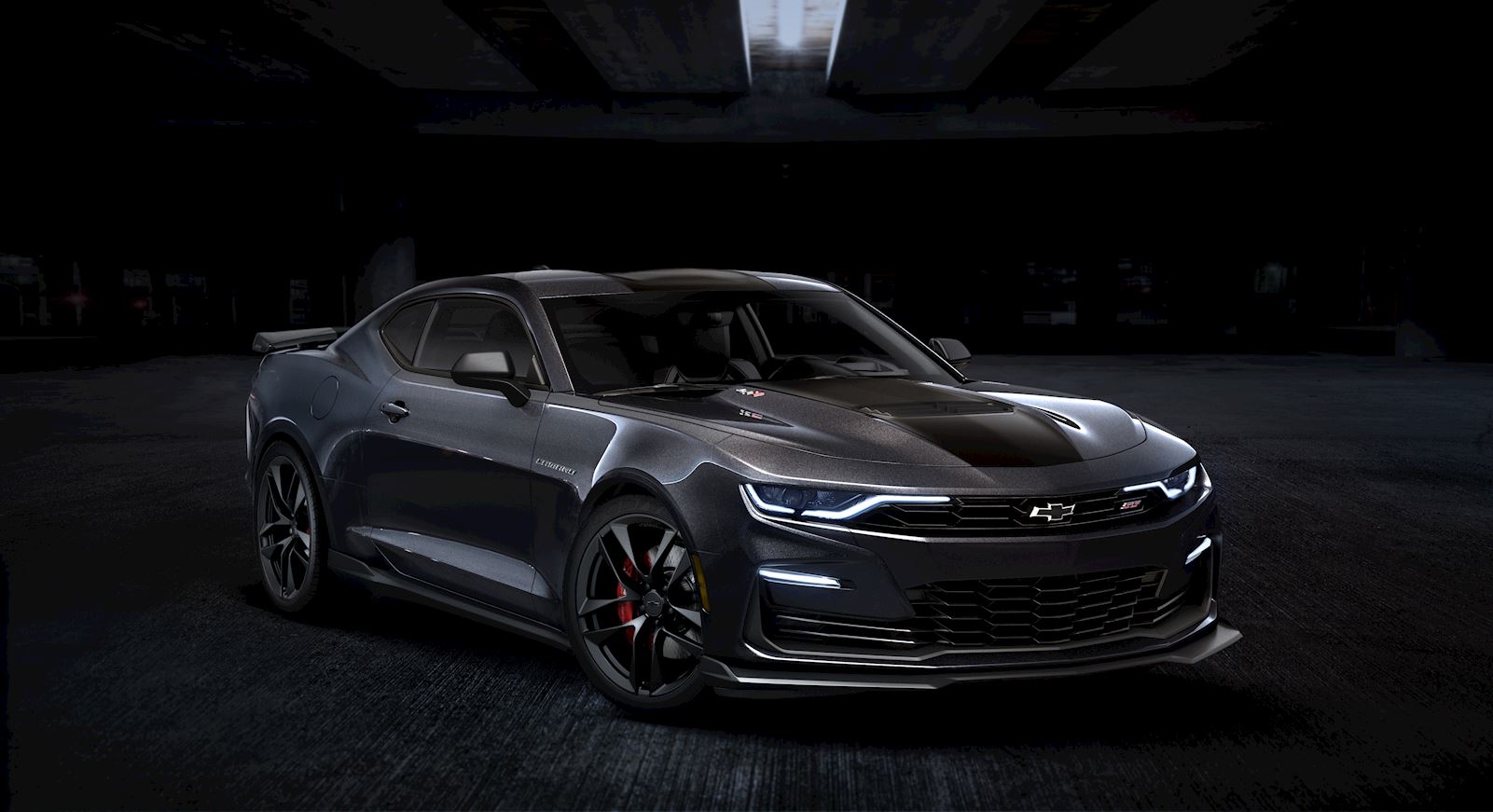
On the financial side, driving a Camaro 1LT in North Dakota is estimated to cost about $190 per month, compared to the average $160 per month for a typical midsize car. You can run your own fuel cost estimates using Chevrolet’s calculator tool.
What’s more significant, though, is that the Camaro will be bowing out just as Ford introduces a redesigned, gas-powered Mustang.
The new Mustang packs more horsepower from its standard V8 and sits on a refined version of its familiar platform. Still, it’s important to remember that the Camaro has historically held an edge in handling and sometimes even performance compared to its Mustang rival.
However, since the 2016 redesign, those advantages have come at a cost—specifically, compromised visibility and cramped cabin and cargo space. These flaws led many shoppers to turn instead toward the Mustang or Dodge Challenger, both of which offered a more livable experience.
3. Nissan Versa (2020–present)
While affordable, the Nissan Versa skimps on ergonomics. The pedal box feels cramped, and the throttle travel is inconsistent.
Many drivers note a mushy brake pedal and an accelerator that’s too low to the floor, causing awkward ankle movement.
The steering wheel also doesn’t telescope far enough to compensate for the pedal positioning, further reducing comfort.
The 2025 Nissan Versa remains a user-friendly option, particularly suited for navigating crowded city streets. It offers composed handling and maintains a steady ride on most road surfaces.
Its compact dimensions and tight turning radius make maneuvering in urban settings a breeze. However, the steering lacks responsiveness, and the ride quality can feel unsettled over rougher pavement.
All Versa models are equipped with front-wheel drive and powered by a 122-horsepower four-cylinder engine. A five-speed manual transmission comes standard, while a continuously variable automatic transmission (CVT) is also available.
The Versa performs best in city or suburban environments. While it is capable of reaching highway speeds, it does so without much enthusiasm.
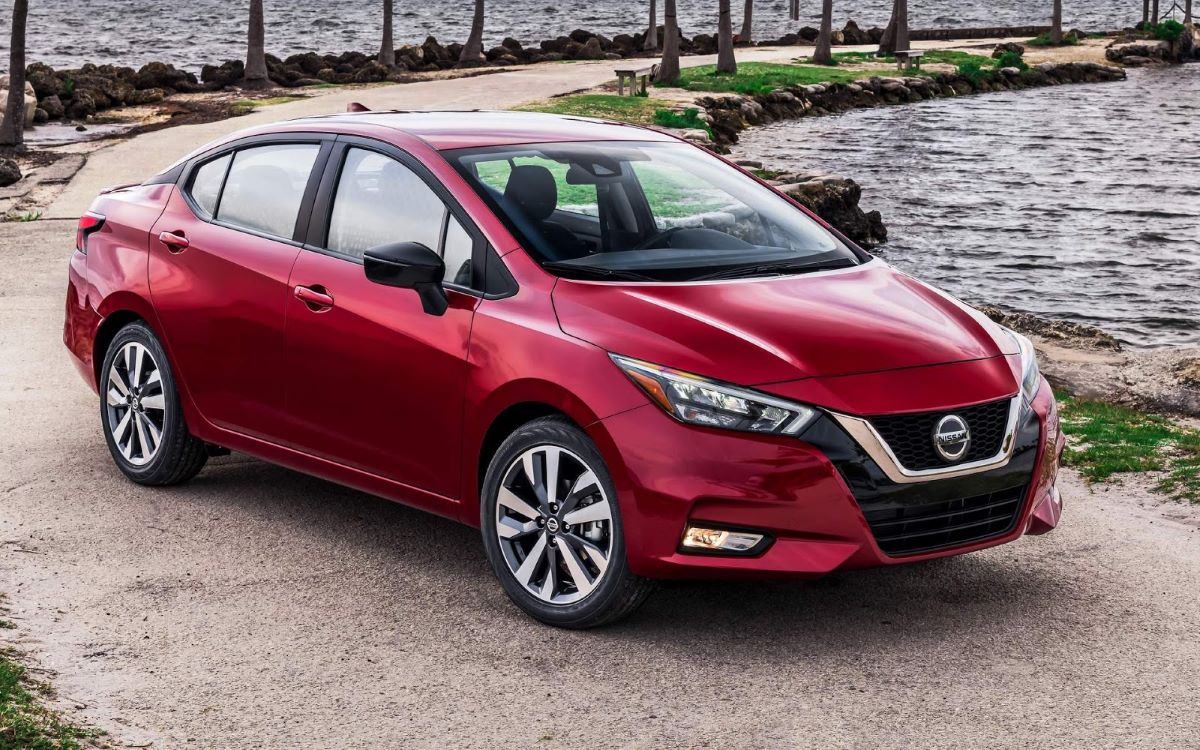
The 2025 Nissan Versa with the CVT offers impressive fuel economy for a subcompact vehicle, delivering up to 32 mpg in the city and 40 mpg on the highway. The base model with the manual transmission is slightly less efficient, returning EPA estimates of 27 mpg in the city and 35 mpg on the highway.
Inside, the Versa presents a surprisingly pleasant cabin for a car in its price range. The materials feel solid, and there are a decent number of soft-touch surfaces throughout.
That said, hard plastics are still present, which is expected at this budget level. This five-passenger vehicle provides enough room for two adults in both the front and rear seats. A third adult can squeeze into the back if necessary, but space will be limited, and the rear seats themselves are fairly firm.
Trunk space is another strong point for the Versa. The standard model offers 14.7 cubic feet of cargo room, while higher trims increase that to 15 cubic feet—both figures being generous for the subcompact class. The available 60/40-split-folding rear seats allow for added flexibility, and thanks to a wide trunk opening and a low load floor, loading and unloading items is made easier.
4. Toyota Tacoma (3rd Generation)
The third-gen Tacoma (2016–present) gets called out often for its poor driving position and the pedals are a big part of the issue.
They sit low and offset, requiring an unnatural bend in the knee for many drivers.
Combined with a flat seat and lack of telescopic steering reach, the Tacoma’s driving ergonomics are some of the worst in its class, especially on long highway trips.
Every nonhybrid Tacoma is powered by a turbocharged 2.4-liter four-cylinder engine, though it comes in two distinct versions and can be paired with either an eight-speed automatic transmission or a six-speed manual. Both rear-wheel drive and four-wheel drive configurations are offered.
The base version of this engine, producing 228 horsepower, is exclusive to the entry-level SR trim. All other trims are equipped with more potent i-Force variants, generating up to 278 horsepower and 317 pound-feet of torque.
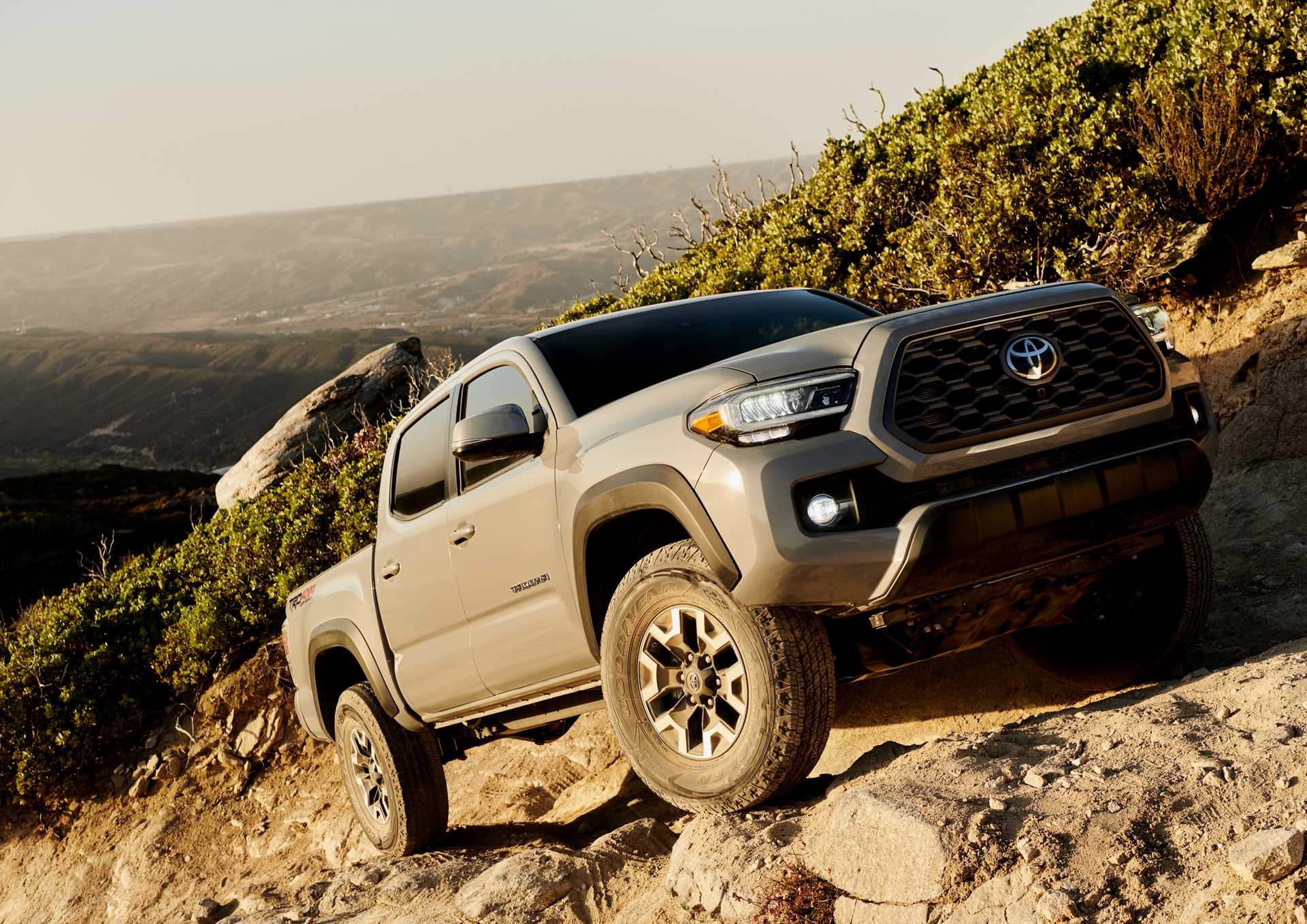
Despite sharing body-on-frame construction across the lineup, the Tacoma offers two different rear suspension setups. The SR, SR5 extended cab, and TRD PreRunner models use traditional leaf springs, while all other trims benefit from modern coil springs.
We’ve tested multiple versions of the redesigned Tacoma, including the TRD Off-Road, the PreRunner, and a manual-transmission variant. Across the board, the truck demonstrates a notable leap in on-road comfort, particularly in models equipped with coil springs, which deliver a far smoother ride than those still using leaf springs.
In everyday driving, the powertrain provides ample performance for city cruising and highway maneuvers like merging or passing. However, the Tacoma truly shines off the pavement. Designed with rugged terrain in mind, the off-road-oriented models come outfitted with the necessary equipment to tackle a wide variety of challenging environments.
5. Ford Mustang (S550)
While fun to drive in many ways, the S550 Mustang’s pedal layout can be frustrating. The brake and gas pedals are not ideally spaced for heel-and-toe shifting.
In automatic versions, drivers often feel that the throttle is too close to the transmission tunnel, limiting foot movement.
Some owners also report inconsistent brake pedal feedback, reducing driving confidence during spirited use.
Good pedal ergonomics can make or break the driving experience especially for enthusiasts and commuters alike. From the precise layout of the Porsche 911 to the awkward sprawl of the Jeep Wrangler, it’s clear that thoughtful design matters.
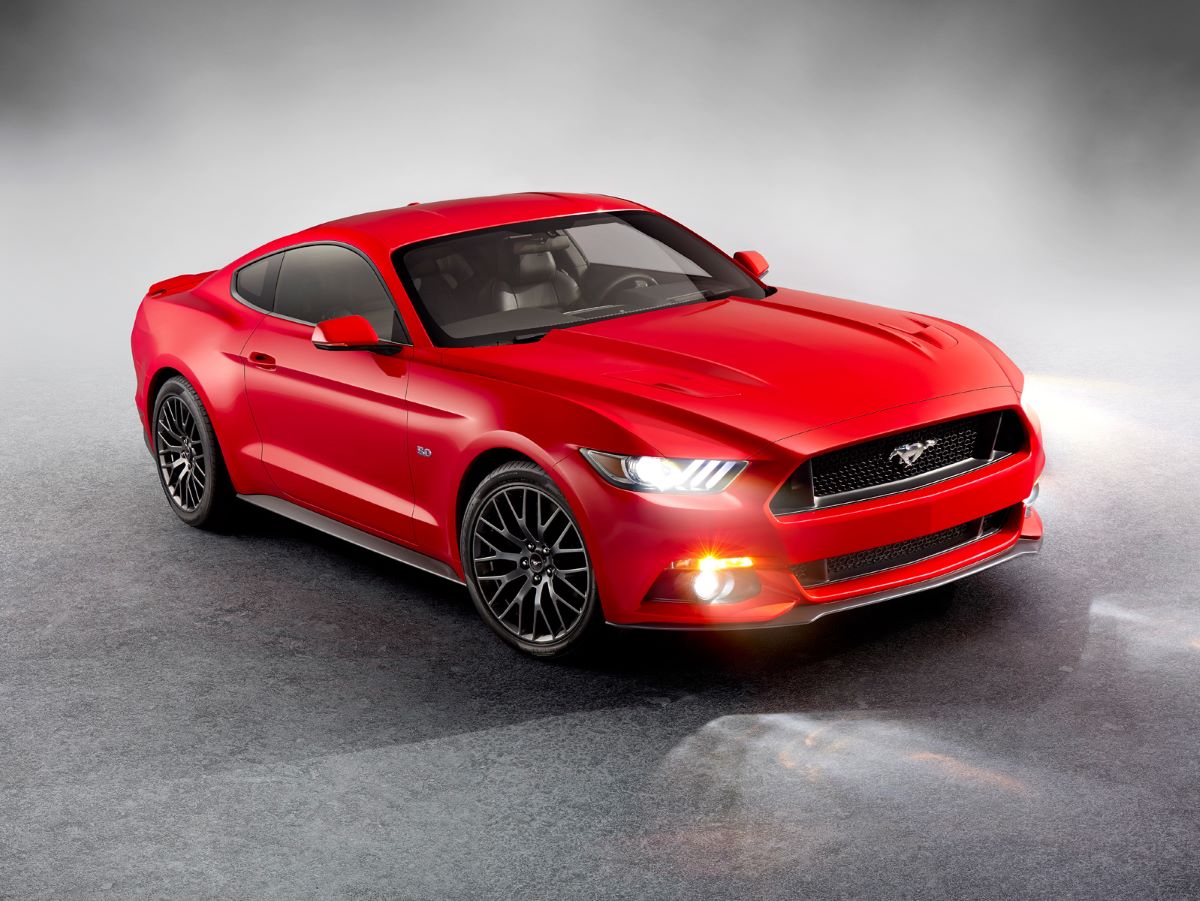
With both the Dodge Challenger and Chevrolet Camaro no longer in production, the Ford Mustang now stands alone as the last true muscle car on the market. Offered with either a turbocharged four-cylinder or the iconic 5.0-liter V8, the Mustang caters to a broad spectrum of enthusiasts through a wide range of trim levels.
For 2025, Ford expands the lineup with an all-new addition: the GTD. This new model takes major cues from the Mustang GT3 race car, incorporating serious performance components like a pushrod-actuated suspension, adjustable dampers, and a rear transaxle — a setup that integrates the transmission and rear differential into a single compact unit.
And for those craving unrelenting power, the GTD doesn’t disappoint, boasting a track-ready supercharged 5.2-liter V8 that cranks out upwards of 800 horsepower.
If you drive often, especially with a manual transmission, consider pedal feel and placement as seriously as engine performance or suspension tuning.

